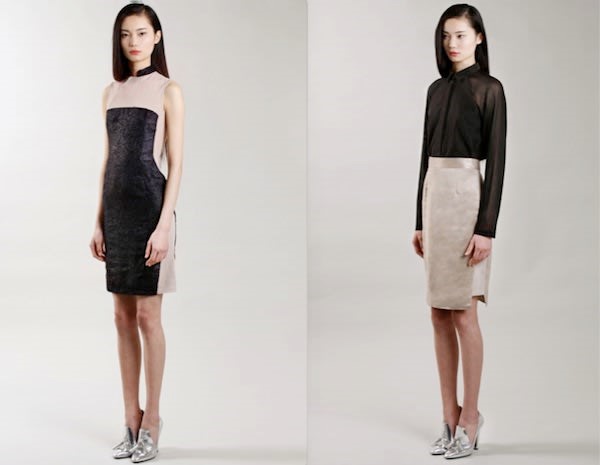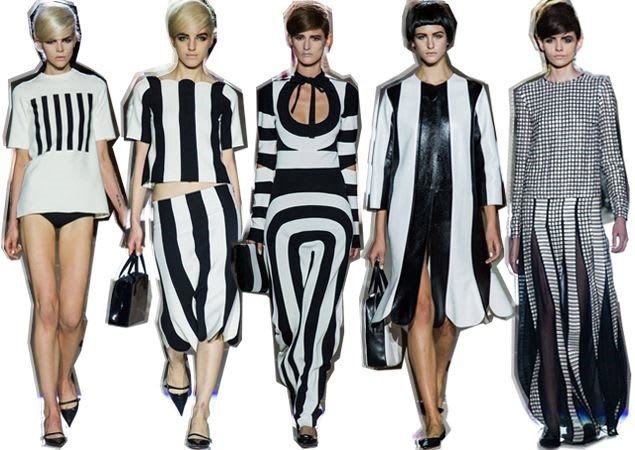Every garment is uniquely designed keeping the wearer in mind. But there are few fundamentals that set specific directions when it comes to designing. As a designer, you have to visualise how to apply these principles. The principles of fashion design include Unity, Balance, Proportion, Emphasis and Rhythm.
Fashion design is an elaborate field of study that has many interesting subjects. It’s really important to get your basics right, which is why fashion designing courses include subjects like drawing, principles of fashion design, elements of design, colour theory and so on. Let’s look at some reasons why basics are important in fashion design:
- No matter how advanced your subject or knowledge might be, it always builds on your basics
- The basics which are often termed as easy, will be very helpful when you are working on elaborate projects.
- If you get any of your basics wrong, you will have to start all over again as that’s the foundation for your whole concept.
Therefore, when it comes to fashion designing, every designer has to smartly combine these principles and use them to enhance the look of a garment. For example, the actual beauty of a dress comes out only when it has beautiful work, eye-catching colour, perfect pattern, etc. All these elements can be achieved only when these principles of design in fashion are applied in a creative manner. Let us understand each of these principles of fashion in detail:
Proportion

Proportion in fashion design is one of the most important principles, especially when applied to a garment. It relates to different elements of a garment such as a number, size and amount. For example, in fashion design classes, students are taught to sketch a body form keeping various body proportions in mind. The measurement of the head is small as compared to other parts of the body. Similarly, this concept is applied when designing a garment. Elements such as a collar, pocket, placket, hemline, etc. are designed in such a way that it is proportionate to one another. Understanding your own body proportions is essential then, when it comes to creating patterns for yourself that work well proportionally. It allows you to play around with vertical and horizontal lines in a way that emphasises the elements of your body that you do like and minimising the areas that you are not so keen on
Balance

Balance is another important principle of design in fashion. Balance again can be split into two- symmetrical and asymmetrical balance. Symmetrical balance is when you divide a garment horizontally or vertically, it appears the same. Symmetrical fashion is a classic and is appreciated by people who love to go minimal. On the other hand, asymmetrical balance can be defined when a garment has unequal sides or does not appear the same.
Any deviation – even just a pocket placed slightly at an angle on one side – makes for an asymmetric garment. Symmetrical balance is considered to be more usual and normal, but asymmetrical balance exists too and can also work very well, though most often as evening dresses for that ‘wow factor’.
Most designers apply asymmetrical balance on formal clothing such as evening gowns. This style adds a chic look and lots of drama to the attire.
In popular fashion designing institutes such as Hamstech, students get to showcase their collections on the ramp. Principles of fashion are taught extensively, so that students can understand how to incorporate these in their designs. As they prepare for the big event, they are closely monitored and mentored by experts on how to apply these principles creatively in each of their collections.
Unity

Unity, as the name says it, is the harmony between all the principles of fashion. Unity refers to the overall look in a garment. For example, take a blue skirt detailing like a pocket. Here unity would refer to the colour, size and detail which create a sense of harmony. At a glance, the skirt appears complete.
Emphasis

Emphasis in fashion design refers to one particular element in a garment that is exaggerated. An example here would be an evening gown that has a huge flower or a bow on it. Here, the prominent element is the huge flower or bow which is emphasised on the gown. This is something that stands out from the rest of the elements used in the gown. This element instantly grabs your attention.
Usually, designers will make one area stand out by contrasting it with other areas. The area could be different in size, colour, texture, shape, etc. Common facts of emphasis are such as-
- Emphasis using value (light and dark).
- Emphasis using complementary colours and atmospheric perspective.
- Examples of emphasis and subordination in the artwork.
- Emphasis using colour.
In fashion designing courses, topics such as elements and principles of fashion help students understand and implement these elements in their collection.
Rhythm

The last principle is rhythm. When we think rhythm, we typically think of music. And to be fair it is kind of the same in fashion creation.
When you take a look at a garment that has horizontal or vertical lines artistically arranged, it creates a flow. Similarly, this principle can be applied to a colour, print, etc. Rhythm in fashion design is all about the direction and flow of any/all aesthetics involved.
Line direction may be vertical, horizontal, diagonal or curved. Vertical lines lead the eye upward creating the illusion of height to visually slenderize the figure. Horizontal lines usually carry the eye across. Diagonal lines slant and because of the slant are incredibly slimming and like vertical lines, no matter where you place them on your body will slim that area. Curved lines are graceful. They may be soft when slightly curved or bold when tightly curved.
Outfits of one colour and those with center front interest can add height. Use of the “Y” line such as a “V” neckline increases the illusion of height. When two or more vertical or horizontal lines are used, the spacing between the lines will affect the illusion created.
Generally, vertical lines that carry the eye up the figure without interruption will give a taller, more slender illusion. Lines that stop the eye from traveling upward by moving the eye from side to side or back down will create a shorter and heavier illusion.
Very often people face problems when it comes to dressing. You can take advantage of these principles of design in fashion for your daily styling.
These principles of fashion when applied smartly, can enhance the look of a person. For example, a petite woman must choose garments that are proportionate to her height and weight. She must avoid wearing garments that are loose as they appear unflattering. Instead, she must choose patterns and designs that balance her upper and lower body. Similarly, a woman with a heavy upper body must avoid garments that lay emphasis on the shoulder, bust or neckline. Emphasis like a heavy embroidery or a design would make her look heavier. She can choose tiny prints or dark colours that take the attention away from her upper body. You can play around with garments and use these principles of design to create balanced outfit.
As you get to understand each of these principles of design in fashion, you’ll enjoy designing every element of a garment. As a fun assignment, you can do a quick run through your own closet. You’ll be amazed to know how well you can identify the principles of fashion.
And since there is so much to learn to become a professional in this field, it is important that you choose a college and a course. Hamstech, with its experience of over 29years in the field of creative education, is known as one of the best fashion designing colleges in India. With our curated textile designing courses, you will learn to create stylish dresses, crop-tops, jackets, skirts, anarkalis, lehengas, sarees and so much more. Our Fashion Design courses are perfect for beginners and those who want to improve their sketching, designing or stitching abilities.
These courses are well recognised in the fashion industry and will provide you with an enriching learning experience. Join 6 different Hamstech’s Fashion Design courses in Hyderabad and learn to create unique dresses. Enroll now!

